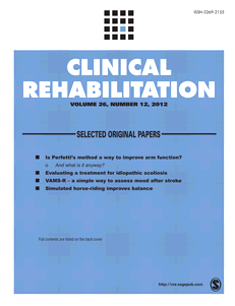
PHYSICAL THERAPY & REHAB
Comparison of physical, geriatric & standard rehabilitation in treatment of hip fracture
Clin Rehabil. 2015 Sep;29(9):892-906538 independently-living patients with non-pathological fractures were randomly assigned to receive either physical, geriatric or standard rehabilitation as post-operative therapy. The purpose of this study was to investigate the effect of each rehabilitation strategy on functional outcomes by comparing the proportion of patients returning to independent living and mortality rates. The results indicated that both physical and geriatric rehabilitation were effective in improving the ability to return to independent living when evaluated 4 months, but not at 12 months, while only physical rehabilitation was found to reduce mortality rates. Additionally, ADL function, hip pain, walking ability and re-operation rate were all found to be unaffected by the modality of rehabilitation.
Unlock the full ACE Report
You have access to {0} free articles per month.Click below to unlock and view this {1}
Unlock NowCritical appraisals of the latest, high-impact randomized controlled trials and systematic reviews in orthopaedics
Access to OrthoEvidence podcast content, including collaborations with the Journal of Bone and Joint Surgery, interviews with internationally recognized surgeons, and roundtable discussions on orthopaedic news and topics
Subscription to The Pulse, a twice-weekly evidence-based newsletter designed to help you make better clinical decisions
Exclusive access to original content articles, including in-house systematic reviews, and articles on health research methods and hot orthopaedic topics
Or upgrade today and gain access to all OrthoEvidence content for just $1.99 per week.
Already have an account? Log in


Subscribe to "The Pulse"
Evidence-Based Orthopaedics direct to your inbox.
{0} of {1} free articles
Become an OrthoEvidence Premium Member. Expand your perspective with high-quality evidence.
Upgrade Now












































































